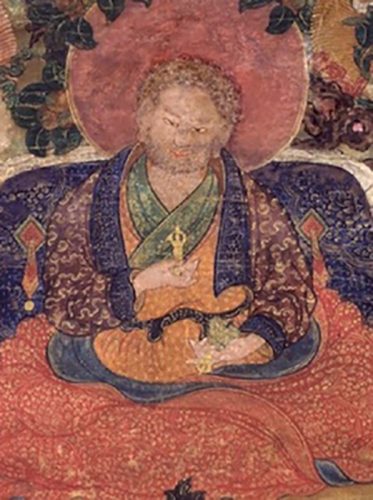Saturday March 5, 2022 NYC
Talk at the End of the Asana & Meditation Class
Friday, March 4, 2022:
“Remember the Purpose.”
~Satguru Shri Mahayogi Paramahansa
A few years ago, during a Sadhana Program in New York with Shri Mahayogi, while we were practicing the asana, I had a sense of urgency about asking this question, “When I practice asana, sometimes I can get sleepy. What should I do?” Shri Mahayogi’s answer was, “Remember the purpose.”
When I heard this, I was pleasantly surprised. It made so much sense! But I also felt a little silly because I had expected Shri Mahayogi to offer me some trick or something related to the physical body to wake myself up, but instead his answer was all about the “why,” or the intention behind the practice of asana. Now come to think of it, his answer applies to the “why” behind all the practices of Yoga!
Actually, at that time, I did not have a clear purpose, so when I heard the answer, I realized that something very big had been missing in my practice of asana—and now I see that this missing part may very well have been missing all around. I had to accept that first. So, I began by practicing asana while longing for that purpose, practicing asana as if it was a form of prayer. By doing that, each asana felt more like a supplication for the purpose.
Around that time, the purpose then became to express gratefulness. The reason was that I needed to recognize that the asana from Shri Mahayogi was a gift, and by expressing my gratitude for it with my whole person, soul and body, I wanted to make myself able to receive that gift. I felt that if I did not see it that way, I could not receive anything from it. Well, this conclusion was reached by experiencing the opposite, by having practiced asana without realizing the gift that it is. From my experience, if asana is approached as a physical exercise, relaxation or as a beautification tool, its benefits are gravely diminished. Having practiced like that in the past, even though I experienced physical and overall mental benefits, I did not make much progress in Yoga itself. So, I knew that I had to start from acknowledging the value and sacredness of what was being offered to me through the asana from Shri Mahayogi. I think I was trying to make myself capable of receiving this gigantic gift and that made me realize, in turn, that I had to put myself through it knowing that there was so much that I had not experienced yet.
Since participating last year in the Jayanti celebration in honor of the Holy Birth of Shri Mahayogi and working on the preparations to make an offering of a song to Shri Mahayogi on this occasion, my purpose has become to get to know Shri Mahayogi and to be able to understand Him more and more. When I think about it, if Shri Mahayogi, already in the state of Satori, still devoted 14 years of his life to uncover this Asana for us, then there must be something very important that we each must learn about Asana and its connection to the Yoga that Shri Mahayogi has come to teach us. I feel that I must go through the practice of asana, gradually and consistently, in order to get to understand what Shri Mahayogi is revealing to us. His message must be embedded into every single thing he instructs, asana included. And, I also see that coming to understand what Shri Mahayogi is teaching us by practicing asana ourselves, allows us to know Shri Mahayogi himself directly, taking Him in.
Nowadays, I participate in all the online asana classes from New York, so I get to hear different people leading the classes. No doubt, we are constantly hearing a lot of corrections and adjustments to our physical body, and reminders of how to breathe and where to place our focus. It all seems very technical and precise. These are very necessary for each of us to find our completed and maximized pose as it evolves, but I have never experienced a more powerful difference than when I began to practice asana thinking of the purpose—why am I practicing? What am I doing it for? No doubt, when there is that clear and strong intention behind the practice, each asana becomes so powerful. It is as if we can then tap into the incredible power of each asana. I am truly fascinated by asana because of that. There is so much to uncover through asana!
The other day for instance, I heard Sadhya speak about accepting and dealing with whatever condition we are in when we practice asana, without being attached to a “good practice” or categorizing a better physical or mental condition for asana. This reminded me that it is not about the physical, it is about the purpose, regardless of our condition. We can aim for the purpose from whichever state we are in each time we practice, and that will always vary beyond our control. When I think about it now, I believe we should approach meditation or daily actions this way too!
And recently, in a class that was being led by Prajna, I heard her say to Yashoda, (actually Prajna was honest that in fact it was Anandamali who directed her to mention it to Yashoda during the class) “You can do it! Remember the aim!” I was so happy to hear those words as a reminder that I have to always remember my purpose too. Even though the message was spoken to Yashoda, it was in fact for all of us. So, in my mind, I happily said, “Yes!” Yes!”
~ Karuna
To make a financial contribution, visit our CONTRIBUTION PAGE.
Visit and share our WELCOME PAGE to join our online classes.

